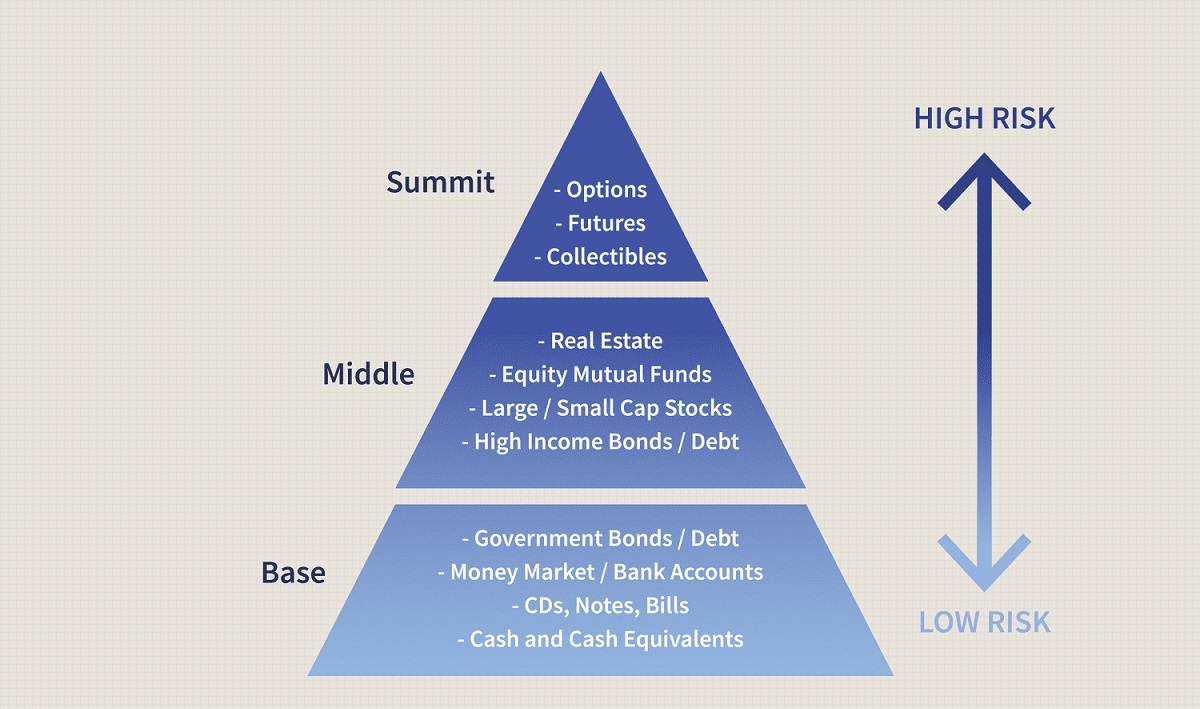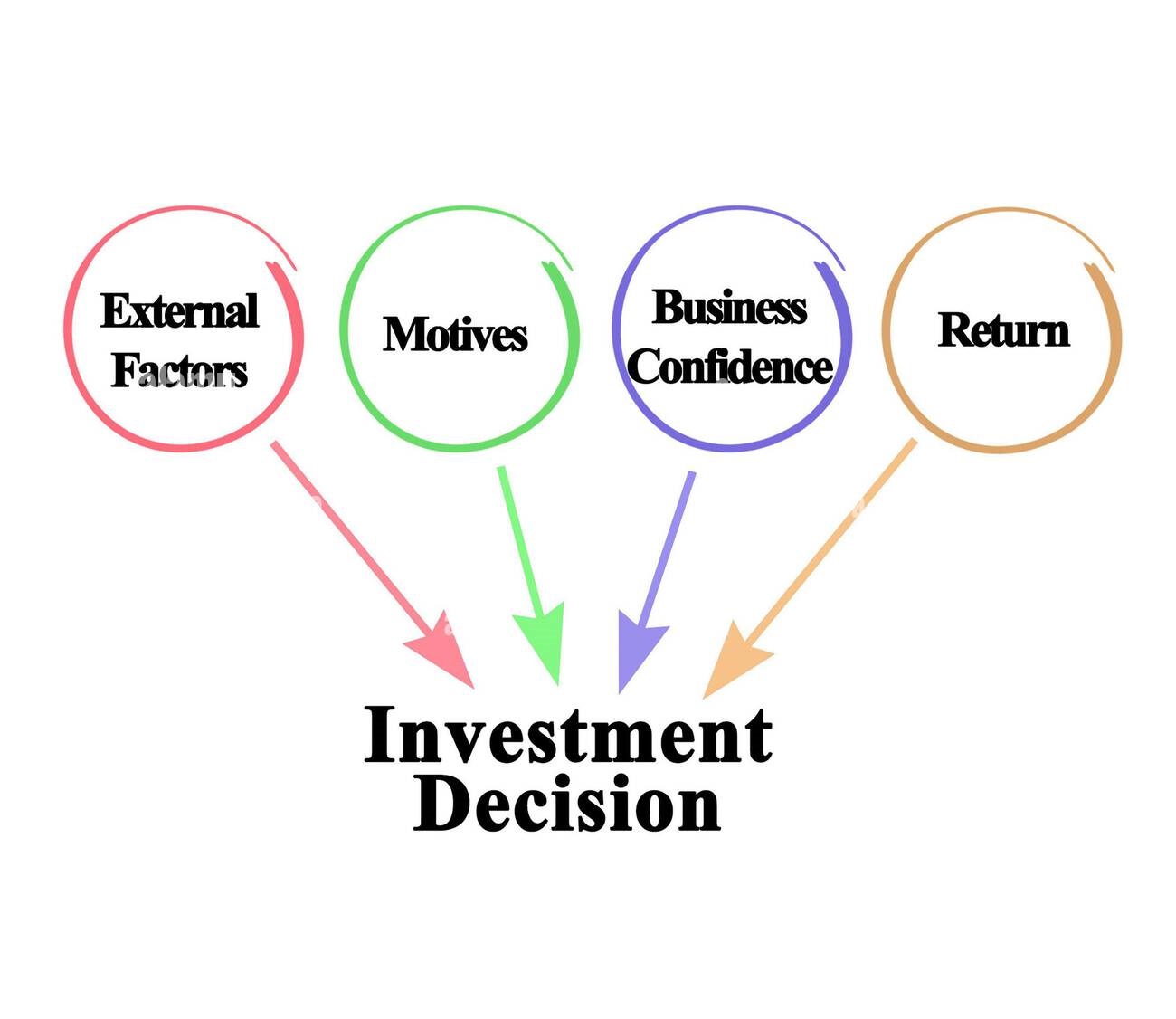Introduction
Welcome to the world of investments! If you’re new to the concept or looking to further expand your knowledge, understanding the concept of a balanced portfolio of investments is essential. A balanced portfolio is a strategic mix of different types of investments that aims to provide a diversified approach to managing risk and maximizing returns.
Investing can be a daunting task, especially with the vast array of options available. However, by creating a balanced portfolio, you can navigate the investment landscape with greater confidence and increase your chances of achieving your financial goals.
But what exactly does it mean to have a balanced portfolio of investments? In simple terms, it refers to spreading your investments across different asset classes, such as stocks, bonds, real estate, and commodities, to minimize the impact of any one investment performing poorly. This diversification helps to mitigate risk and optimize returns over the long term.
A balanced portfolio is not about putting all your eggs in one basket, but rather about carefully selecting a mix of investments that align with your risk tolerance, investment goals, and time horizon. By creating a diversified portfolio, you can achieve a balance between potential growth and stability.
In this article, we will delve into the importance of a balanced portfolio, how to create one, the concept of diversification and asset allocation, the process of rebalancing, risk management techniques, and the benefits of maintaining a balanced portfolio of investments.
What is a Balanced Portfolio of Investments?
A balanced portfolio of investments is a strategic combination of different assets that aims to distribute risk and optimize returns. It involves diversifying your investments across various asset classes, such as stocks, bonds, real estate, and commodities. The purpose is to create a well-rounded portfolio that can withstand fluctuations in any specific investment and provide a stable return over time.
When building a balanced portfolio, it’s important to consider your financial goals, risk tolerance, and investment horizon. Different investors may have varying objectives, ranging from long-term growth to capital preservation. By diversifying your investments, you can align your portfolio with these goals and reduce the impact of market volatility.
One key aspect of a balanced portfolio is spreading investments across different asset classes. This allows you to capture the potential growth of high-risk investments while benefiting from the stability of low-risk investments. For example, while stocks may offer higher returns, they are also subject to greater price volatility. By including bonds or real estate in your portfolio, you can mitigate risk and enjoy a more stable source of income.
Another factor to consider in a balanced portfolio is the allocation of assets. This refers to the percentage of your portfolio allocated to each asset class. A balanced allocation provides a mix of assets that can help you achieve diversification and optimal risk management. The allocation can be adjusted based on changing market conditions and your investment objectives.
Ultimately, a balanced portfolio provides a way to minimize risk while potentially maximizing returns. By spreading investments across different asset classes and adjusting their allocation, you can achieve a diversified portfolio that aligns with your unique investment goals and risk tolerance.
Why is a Balanced Portfolio Important?
A balanced portfolio is crucial for several reasons. Let’s explore why maintaining a balanced portfolio is important for investors.
First and foremost, a balanced portfolio helps manage risk. By diversifying your investments across different asset classes, you reduce the impact of any one investment performing poorly. This means that if one asset class experiences a downturn, other investments may offset the losses, minimizing the overall impact on your portfolio. This risk management strategy is especially important during times of market volatility or economic uncertainty.
Secondly, a balanced portfolio allows investors to capitalize on opportunities for growth. Different asset classes have varying levels of risk and return potential. By diversifying your investments, you have the opportunity to participate in the growth potential of multiple asset classes simultaneously. This can help you achieve a balance between potential growth and stability in your investment journey.
Furthermore, a balanced portfolio aligns with your risk tolerance and investment goals. Every investor has a unique risk tolerance, which refers to their ability and willingness to tolerate fluctuations in the value of their investments. By diversifying your portfolio, you can match your investments to your risk tolerance level. For instance, if you have a lower risk tolerance, you may allocate a higher percentage of your portfolio to less volatile assets, such as bonds or cash equivalents.
In addition, a balanced portfolio provides a buffer against economic cycles and market fluctuations. Different asset classes tend to perform differently in different market conditions. For instance, during periods of economic growth, stocks may perform well, while during economic downturns, bonds or defensive stocks may provide more stability. By diversifying across asset classes, you can position yourself to withstand market fluctuations and protect your investment portfolio.
Furthermore, a balanced portfolio promotes discipline and reduces the temptation to make impulsive investment decisions. When you have a well-diversified portfolio, you are less likely to be swayed by short-term market movements or the latest investment fads. Instead, you can maintain a long-term perspective and focus on your overall investment strategy.
In summary, a balanced portfolio is important as it helps manage risk, capitalizes on growth opportunities, aligns with your risk tolerance, provides a buffer against market fluctuations, and promotes disciplined investing. By creating a well-diversified portfolio, you can increase your chances of achieving your investment goals while minimizing unnecessary risks along the way.
How to Create a Balanced Portfolio
Creating a balanced portfolio involves a thoughtful approach and careful consideration of your financial goals, risk tolerance, and investment horizon. Follow these steps to create a well-diversified portfolio:
1. Determine your investment goals: Start by clearly defining your investment objectives. Are you looking for long-term growth, income generation, or capital preservation? Knowing your goals will guide your investment decisions and asset allocation.
2. Assess your risk tolerance: Understand your comfort level with risk. Consider factors such as your age, financial obligations, and investment experience. Investors with a higher risk tolerance may allocate a larger portion of their portfolio to equities, while those with a lower risk tolerance may favor more stable assets like bonds.
3. Identify your time horizon: Determine how long you plan to invest your money. The longer your time horizon, the more you can potentially withstand short-term market fluctuations and consider higher-risk investments for potential growth.
4. Diversify across asset classes: Allocate your investments across different asset classes, such as stocks, bonds, real estate, commodities, and cash equivalents. This diversification helps spread risk and reduce the impact of any single investment’s performance on your portfolio.
5. Allocate your assets: Decide on the percentage allocation for each asset class based on your risk tolerance and investment goals. A balanced allocation may include a mix of equities, bonds, and other asset classes that align with your objectives.
6. Consider geographical diversification: Expand your investment universe beyond your home country. Investing in international markets can provide exposure to different economies and industries, reducing the risk associated with a single market.
7. Regularly review and rebalance: Periodically review your portfolio to ensure it remains aligned with your goals. Rebalance your holdings by buying or selling assets as needed to maintain your desired asset allocation. This process allows you to capitalize on the best-performing assets and adjust for any changes in your risk tolerance.
8. Seek professional advice if needed: If you’re unsure about creating a balanced portfolio, consider consulting with a financial advisor or investment professional who can provide guidance based on your specific circumstances and goals.
Remember that creating a balanced portfolio is an ongoing process. Market conditions, personal circumstances, and investment goals may change over time, requiring you to periodically reassess and make adjustments to your portfolio to ensure it remains balanced and aligned with your objectives.
Diversification in a Balanced Portfolio
Diversification is a key principle in creating a balanced portfolio. It involves spreading your investments across different asset classes, industries, geographic regions, and even investment strategies. The goal is to reduce the overall risk of your portfolio by avoiding overexposure to any single investment or market segment.
One of the main reasons diversification is important is to minimize the impact of market volatility. Different asset classes have varying levels of risk and tend to perform differently under different market conditions. By diversifying, you can potentially offset losses from one investment with gains from another. This helps to smooth out your overall investment returns and reduce the impact of any single investment decision.
Diversification also allows you to participate in the potential growth of different sectors or regions. By holding investments across multiple industries or geographic regions, you can capitalize on opportunities for growth in different areas, even if one sector or region experiences a downturn.
Furthermore, diversification helps manage non-systematic risk, also known as company-specific or industry-specific risk. This risk refers to the unique risks associated with individual companies or industries. By investing in a variety of companies and industries, you can avoid being overly exposed to the risks inherent in any one company or industry. For example, if you hold stocks in different sectors such as technology, healthcare, and consumer staples, a decline in one sector may be offset by the performance of the others.
Another benefit of diversification is that it can improve risk-adjusted returns. By spreading your investments across different asset classes, you can potentially increase the return on your portfolio for a given level of risk. This is because different asset classes have different risk and return characteristics. For instance, while stocks may offer higher potential returns, they also come with higher volatility. By diversifying with less volatile assets such as bonds, you can potentially achieve a better risk-reward trade-off.
It’s worth noting that diversification does not guarantee profits or protect against all losses. Even a well-diversified portfolio can still experience fluctuations. However, it can help manage risk and potentially enhance long-term performance.
In summary, diversification plays a crucial role in a balanced portfolio. By spreading your investments across different asset classes, sectors, and geographic regions, you can minimize risk, participate in growth opportunities, manage company-specific risk, and potentially improve risk-adjusted returns. It’s important to regularly review and rebalance your portfolio to ensure that your diversification strategy remains aligned with your investment goals and risk tolerance.
Asset Allocation in a Balanced Portfolio
Asset allocation is a critical component of creating a balanced portfolio. It involves determining the optimal distribution of your investments across different asset classes, such as stocks, bonds, real estate, and cash equivalents. The objective is to achieve a balance between potential growth and risk management based on your financial goals, risk tolerance, and investment time horizon.
The key to successful asset allocation is to understand that different asset classes have varying levels of risk and return potential. Stocks, for example, are generally the riskiest asset class but have the potential for higher long-term returns. Bonds, on the other hand, tend to be less volatile but offer lower potential returns. Cash equivalents, such as money market funds, are considered the least risky but provide minimal growth.
When determining your asset allocation, you should consider your risk tolerance. Assess your comfort level with market fluctuations and your ability to withstand short-term losses. A risk-averse investor may allocate a higher percentage of their portfolio to less volatile assets, such as bonds or cash equivalents. A more risk-tolerant investor may allocate a larger proportion to stocks or other higher-growth assets.
Additionally, your investment time horizon also plays a role in asset allocation. If you have a long investment horizon, such as for retirement savings, you may have a higher allocation to growth-oriented assets like stocks. This is because you have a longer time period to potentially ride out short-term market fluctuations. Conversely, if you have a shorter investment horizon, such as for short-term goals or near-term expenses, you may allocate a higher percentage to more stable assets like bonds or cash equivalents.
It’s important to note that asset allocation is not a one-time decision. As your financial goals and market conditions change, you may need to adjust the allocation of your assets. This process is known as portfolio rebalancing. Rebalancing involves periodically reviewing your portfolio and making adjustments to maintain the desired proportion of asset classes. For example, if stocks have performed exceptionally well, your portfolio may have become overweight in stocks. To rebalance, you would sell some stocks and allocate a portion of the proceeds to the underrepresented asset classes.
Asset allocation is a dynamic process that requires ongoing monitoring and adjustment. Maintaining a well-diversified and balanced allocation can help you manage risk, capitalize on growth opportunities, and align your investments with your individual financial goals and risk tolerance.
Rebalancing a Balanced Portfolio
Rebalancing is a fundamental process in maintaining a balanced portfolio. It involves periodically reviewing and adjusting the allocation of assets within your portfolio to ensure that it remains aligned with your intended asset allocation and investment objectives.
One of the main reasons for rebalancing is to control risk. Over time, the performance of different asset classes can cause your portfolio to deviate from your desired asset allocation. For example, if the stock market has experienced significant growth, the percentage of your portfolio allocated to stocks may increase beyond your target allocation. This could leave your portfolio overexposed to stock market volatility. Rebalancing allows you to sell some of your stock holdings and redistribute the proceeds into other asset classes, bringing your portfolio back into balance.
Rebalancing also helps to take advantage of market opportunities. By selling assets that have appreciated and reallocating the funds to underperforming assets, you effectively buy low and sell high. This maintains the discipline of buying assets that are undervalued and selling assets that are overvalued, adhering to the principle of “buy low, sell high.”
The frequency of rebalancing depends on your investment strategy and personal preferences. Some investors rebalance on a specific schedule, such as quarterly or annually, while others rebalance when the portfolio’s allocation deviates significantly from the target. Regardless of the approach, it’s important to not overreact to short-term market fluctuations and maintain a strategic long-term view.
When rebalancing, it’s crucial to consider transaction costs and tax implications. Review the costs associated with buying and selling investments, such as brokerage fees and capital gains taxes. Minimizing transaction costs is important to preserve the value of your portfolio. Additionally, consult with a tax professional to understand the tax consequences of rebalancing, as selling certain investments may trigger taxable gains.
Rebalancing can be done manually, where you periodically evaluate your portfolio and make necessary adjustments, or with the assistance of automated tools or financial advisors. Automatic rebalancing tools can help maintain consistent and disciplined portfolio management by automatically adjusting your assets back to the target allocation.
Remember that rebalancing is not a one-size-fits-all strategy. It should be tailored to your individual investment goals, risk tolerance, and market conditions. Regularly revisiting your portfolio and ensuring it remains aligned with your desired asset allocation can help you stay on track to achieve your long-term financial objectives.
Risk Management in a Balanced Portfolio
Risk management is a crucial aspect of maintaining a balanced portfolio. While diversification and asset allocation help mitigate risk, additional risk management strategies can further enhance the stability of your investments. Here are some key risk management techniques to consider:
1. Setting risk tolerance: Determine your risk tolerance level by assessing your ability and willingness to withstand investment losses. This will help guide your asset allocation decisions and ensure that your portfolio aligns with your risk tolerance.
2. Implementing stop-loss orders: A stop-loss order is a predetermined price at which you sell an investment to limit potential losses. By setting stop-loss orders on individual holdings, you can automatically trigger a sale if the investment falls below a certain threshold.
3. Using hedging techniques: Hedging involves taking offsetting positions in different assets to reduce the impact of market fluctuations. For example, you may use options or futures contracts to hedge against potential losses in your portfolio.
4. Regular monitoring: Stay informed about market trends and news that may affect your investments. Regularly review your portfolio to identify any potential risks or areas that require adjustments.
5. Staying diversified: Maintain a well-diversified portfolio to reduce the impact of any single investment or market segment on your overall portfolio performance. By spreading your investments across different asset classes, industries, and geographic regions, you can decrease the likelihood of significant losses in your portfolio.
6. Conducting due diligence: Before investing in any asset, thoroughly research and analyze the investment opportunity. Consider factors such as the company’s financial health, industry outlook, and management team. Doing your due diligence can help mitigate potential risks associated with individual investments.
7. Stress testing: Perform stress tests on your portfolio by simulating different market scenarios. This helps assess how your portfolio may perform under adverse conditions and identify any vulnerabilities that need to be addressed.
8. Regular reviews and adjustments: Periodically review your portfolio to ensure it remains aligned with your risk tolerance and investment goals. Make adjustments as needed to rebalance your portfolio and address any emerging risks.
It’s important to note that risk management does not eliminate all investment risks but helps to mitigate their impact. Striking a balance between risk and potential return is crucial in managing a balanced portfolio effectively.
By implementing risk management techniques and continuously monitoring your portfolio, you can achieve a more stable investment journey, manage potential risks, and increase the likelihood of achieving your long-term financial objectives.
Benefits of a Balanced Portfolio
A balanced portfolio offers several key benefits for investors. Let’s explore some of the advantages of maintaining a well-diversified investment strategy:
1. Risk Mitigation: One of the primary advantages of a balanced portfolio is risk management. By diversifying your investments across different asset classes, industries, and geographic regions, you can reduce the impact of any single investment or market segment on your overall portfolio. This diversification helps to minimize losses during market downturns and can provide more stability during periods of volatility.
2. Potential for Growth: While a balanced portfolio aims to manage risk, it also provides potential for growth. By distributing your investments across different asset classes, you have the opportunity to participate in the growth potential of multiple sectors and industries. This broad exposure can help capture growth opportunities and potentially enhance overall portfolio performance.
3. Preservation of Capital: A balanced portfolio can help preserve your capital over the long term. By diversifying your investments, you are less susceptible to significant losses from any single investment. This preservation of capital can provide a sense of financial security and protect against unnecessary risks.
4. Smoother Investment Journey: A well-diversified portfolio can provide a smoother investment journey by reducing the impact of market volatility. Instead of experiencing drastic fluctuations in portfolio value, a balanced portfolio aims to provide more consistent and stable returns over time. This can help avoid emotional reactions to market ups and downs and promote a disciplined long-term investment approach.
5. Flexibility and Adaptability: A balanced portfolio offers flexibility and adaptability to changing market conditions. By regularly reviewing your portfolio and rebalancing as needed, you can adjust the allocations to different asset classes to take advantage of emerging opportunities or mitigate potential risks. This adaptability helps ensure that your investment strategy remains relevant and aligned with your financial goals.
6. Optimal Risk-Return Trade-Off: A balanced portfolio seeks to strike a balance between risk and reward. By diversifying across different asset classes, you can potentially enhance your risk-return trade-off. While higher-risk investments may offer greater potential for returns, lower-risk investments can provide stability and income. A well-balanced allocation aims to optimize your risk exposure while maximizing potential returns.
7. Guided Decision Making: Developing a balanced portfolio requires thoughtful decision-making and strategic planning. By going through this process, investors gain a deeper understanding of their financial goals, risk tolerance, and investment objectives. This guided decision-making helps promote disciplined investing and a long-term perspective.
In summary, a balanced portfolio offers numerous benefits, including risk mitigation, potential for growth, capital preservation, a smoother investment journey, flexibility, optimal risk-return trade-off, and guided decision-making. By diversifying your investments and maintaining a well-balanced allocation, you can navigate market fluctuations with greater resilience and increase the likelihood of achieving your financial goals.
Conclusion
Building and maintaining a balanced portfolio of investments is essential for investors looking to manage risk and optimize returns. By diversifying across different asset classes, industries, and geographic regions, a balanced portfolio helps mitigate the impact of market volatility and provides stability in the face of uncertain economic conditions.
A balanced portfolio offers multiple benefits, including risk management, potential for growth, preservation of capital, a smoother investment journey, flexibility, an optimal risk-return trade-off, and guided decision-making. It allows investors to spread their investments across various asset classes, aligning their risk tolerance and investment goals, and potentially enhancing their overall portfolio performance.
To create a balanced portfolio, investors should determine their investment goals, assess their risk tolerance, and identify their time horizon. It is crucial to diversify investments across different asset classes, allocate assets based on risk tolerance and investment objectives, regularly review and rebalance the portfolio, and employ risk management techniques to protect against potential losses.
Remember that a balanced portfolio is not a one-time venture but an ongoing process. Market conditions, financial goals, and personal circumstances may change over time, necessitating adjustments and periodic reviews. It’s essential to stay informed, seek professional advice when needed, and maintain a disciplined approach to ensure the portfolio remains balanced and aligned with long-term objectives.
By following these principles of diversification, asset allocation, rebalancing, and risk management, investors can navigate the complexities of the market with confidence and potentially achieve their financial goals while minimizing unnecessary risks. Ultimately, a balanced portfolio empowers investors to effectively grow and protect their wealth while maintaining a steady path towards financial success.

























